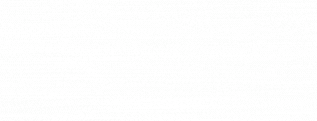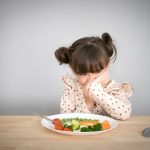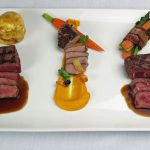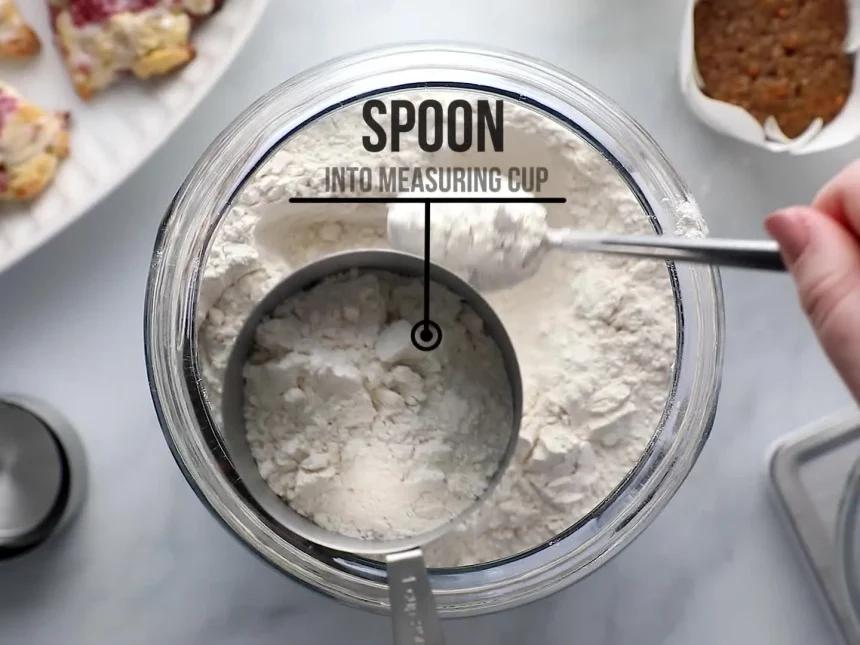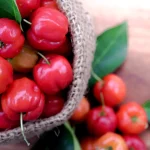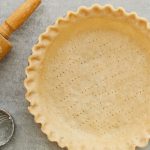How to Properly Measure Baking Ingredients?
Cooking from scratch is not difficult. With the right tools and equipment, you can bring the fun back into the kitchen.
Today we will focus on something that may seem trivial to you. But it is the most important step in any recipe you make. As you know, cooking is not very forgiving. This is science and extrapolating measurements can be disastrous. You can easily get away with a handful or two when cooking dinner, but a little miscalculation can turn your chocolate brownies into pebbles. Understanding the correct measuring method for a particular ingredient can lead to better baking results. Because the difference between recipe success and failure can be a false metric.
When it comes to cooking, you have to be a perfectionist. Learn how to measure the right ingredients for baking to make your next recipe a success.
How to measure flour
Flour is the most commonly mismeasured ingredient. Whether you’re using breadcrumbs, all-purpose flour, all-purpose flour, or any other off-the-shelf flour, use the “spoon leveling method.” Do not scoop flour from the container/bag with a measuring cup as there may be 50% more than needed. Instead, pour the flour into the cup. Tapping the flour or tapping the measuring cup will cause the flour to settle into the cup. After pouring the flour into the measuring cup, flatten the top of the measuring cup with the back of a knife.
Make a hole in the head. Add the flour and make it smooth. Do not pick wheat.
How to measure sifted flour? If the recipe says “1 cup sifted flour,” measure and sift the flour. If the recipe says “1 cup sifted flour,” sift the flour and measure. It all depends on where the word “constitution” appears on the ingredient label. If “sieving” is added in front of the ingredient name, it should be measured after sieving. If “sieve” is added after the ingredient name, measure and sieve.
My favorite container for storing bulk ingredients is the Airless Flour Container. (Affiliate link, I love them!) I have about 10 of these and recommend them to anyone who asks. It is used for various purposes such as soft flour, soft flour, breadcrumbs, brown sugar and granulated sugar. They can hold a 3.8 gallon or approximately 5-pound bag of flour. I use labels to create each label.
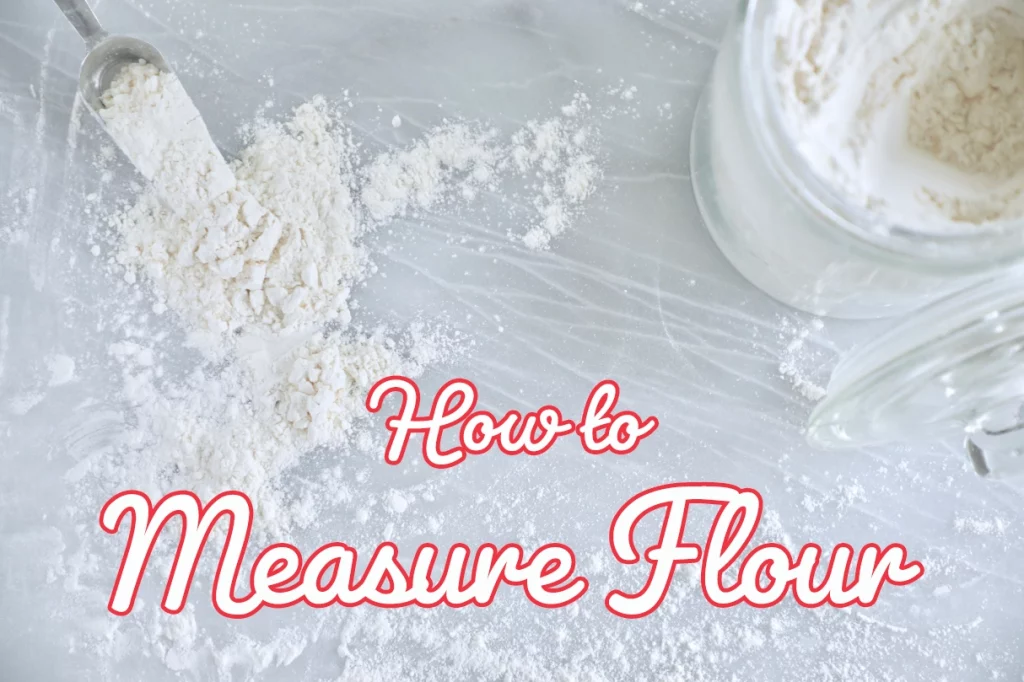
Oats
Make sure you use the right oats for your recipe. To measure oats, use the same spoon and leveling method as for flour.
Whole oats and raw oats are different and it depends on where the oats are cut. I often use whole oats in recipes like granola, oat bars, and oatmeal cookies. Quick oats are finely ground whole oats with a more flour-like consistency. I use quick oats when a recipe with finer and flourier oatmeal is ideal. If you don’t want to include two different types of oats in your baked goods, make quick oats with whole oats. It is very simple. Grind whole oats in a blender or food processor about 5 to 10 times to break them down into a quick oatmeal consistency.
Baking powder and baking soda
Baking powder and baking soda can settle in the container over time. Shake or stir, then use a measuring spoon to scoop a little out of the container. Level with a knife (or if the container has a height).
Always remember the difference between baking powder and baking soda. Each expires after 6 months, but begins to lose its potency after 3 months. Write the date on the box so you know when to replace it.
Instant yeast
If your recipe calls for more or less than a bag of regular yeast (or if you’re measuring in a jar or container), measure yeast like baking powder or baking soda.
Dry yeast can be sold as active dry yeast or instant. I answer many common yeast questions, including the difference between yeast, on my page on baking with yeast.
If your recipe calls for dry yeast and only contains baker’s yeast (like fresh yeast), use this handy conversion chart.
White sugar
Unlike flour, sugar is measured by pouring a cup or spoon into a container/bag until it overflows and then flattening it with the back of a knife. Since sugar is heavier than flour, it settles less in the cup. They are also more nutritious in recipes than other ingredients because the sweetness of the final product depends on your taste. However, sugar crystals are necessary to break down other ingredients, so it’s best to measure ingredients exactly according to directions. Sugar also helps with proper browning, texture, structure and stability.
Brown sugar
Measure brown sugar like granulated sugar. Unless otherwise stated in the recipe, brown sugar should be packed in a measuring cup or spoon. Light brown sugar is the most common, but dark brown sugar has a slightly stronger molasses flavor. You can use a mixture of light and dark brown sugar unless otherwise stated in the recipe.
Baking sugar
Sieve icing sugar if the recipe calls for it. If your confectioners’ sugar is too lumpy, it’s best to sift it anyway. (Nobody wants brown sugar in whipped cream!) As explained in the flour section above, 1 cup of sifted brown sugar means sifted and measured sugar, and 1 cup of sifted brown sugar means sifted sugar.
Cocoa powder
Whether you’re using natural cocoa or Dutch cocoa, measure your cocoa powder using the same scoops and methods you use for flour and icing sugar. Like powdered sugar, cocoa powder can clump together. If your recipe calls for screening, take the time to do it.
More information: Comparison of Dutch process and natural cocoa powder
Liquid sweetener
Liquid sweeteners include maple syrup, molasses, honey, corn syrup, agave, and more. Measure this thick, viscous liquid dry.
Helpful Tip: For easy measuring of sticky sweeteners, lightly spray the inside of a measuring cup with nonstick spray. This makes it much easier to extract the sweetener from the cup!

Liquid
A liquid used in cooking, such as milk, water or oil. It should be measured at eye level. Pour the liquid into the beaker using the liquid measuring cup. Then bend down to make sure the liquid meets the recipe’s exact measurement requirements.
Recommend a kitchen scale
A cup is not always a cup, but a gram or ounce is always a gram or ounce. Metric weights such as grams or ounces are the most accurate. Since cup measurements are the norm where I live, I give recipes in both cup and metric measurements.
When I create recipes for my website and books, I weigh ingredients in recipe tests. When weighing ingredients, it is not necessary to spoon and level ingredients, but if a recipe calls for sifting ingredients, it is best to do it before or after weighing (depending on recipe instructions).
